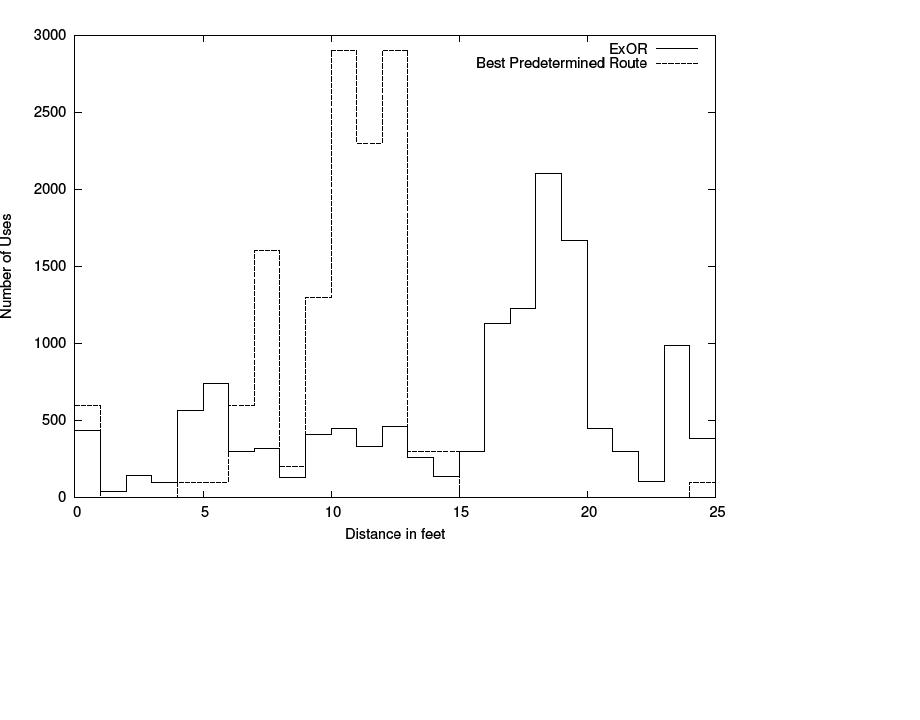ExOR - Extremely Opportunistic Routing: Difference between revisions
Jump to navigation
Jump to search
Content deleted Content added
| Line 3: | Line 3: | ||
Therefor ExOR determines the path as the packet moves through the network instead of choosing a single route ahead of time. |
Therefor ExOR determines the path as the packet moves through the network instead of choosing a single route ahead of time. |
||
= Implementation = |
= Implementation = |
||
== Modified MAC Protocol == |
|||
== Delivery - Ratio MAtrix == |
|||
= Performance = |
= Performance = |
||
In comparison to many well-known Routing - algorithms like OSPF,DSR,AODV Opportunistic routing generally performs better than the |
In comparison to many well-known Routing - algorithms like OSPF,DSR,AODV Opportunistic routing generally performs better than the |
||
Revision as of 12:23, 23 July 2007
Description
Extremely Opportunistic Routing is a Routing algorithm that takes advantage of the characteristics of wireless networks. Therefor ExOR determines the path as the packet moves through the network instead of choosing a single route ahead of time.
Implementation
Modified MAC Protocol
Delivery - Ratio MAtrix
Performance
In comparison to many well-known Routing - algorithms like OSPF,DSR,AODV Opportunistic routing generally performs better than the a margin of 55%. Depending on how large the network is there are improvements of up to 65%. In generell the greatest benefit out of ExOR is its ability to skip intermediate hops.
 |
 |
The first graphic shows how ExOR reduces the number of Transmissions in a network.